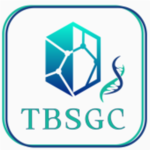
Dr Thomas R. Ioerger
Professor | Computer Science
Dr. Ioerger is a Professor in the Department of Computer Science and Engineering at Texas A&M University. His research interests include Artificial Intelligence, Machine Learning, and Bioinformatics. Many of his research projects focus on development of algorithms for statistical analysis of genomic, biochemical, and protein-structural data, with primary applications to discovering new drugs for treating tuberculosis and other infectious diseases, and understanding mechanisms of antibiotic resistance.
ABOUT
The Ioerger Bioinformatics Lab does interdisciplinary research that spans computer science and biology. We apply Statistical algorithms and Machine Learning to biological data (genomics, transcriptomics, etc) to study antibiotic resistance and contribute to drug discovery for tuberculosis and other infectious diseases.
The biological applications of our research are primarily focused on tuberculosis (TB), caused by the bacterial pathogen Mycobacterium tuberculosis. Our lab has been employing bioinformatics methods in several projects to try to better annotate the genome, understand biological pathways, interpret drug resistance mutations in isogenic mutants (to identify new potential drug targets), and analyze patterns of resistance mutations and clinical cohorts. These methods can be applied to other infectious pathogens as well, such as methicillin-resistant Staphylococcus aureus, and other clinically-important mycobacteria like M. avium and M. abscessus.
A major focus of our lab is determining which genes are essential under what conditions using a technique called TnSeq (sequencing of transposon-insertion mutant libraries). The Ioerger Lab develops and distributes software, called Transit, for statistical analysis of TnSeq data, which is widely used for identifying essential genes in bacterial genomes (and conditionally-essential genes in different environments).
As part of the Chemigenomics Core for the TBSGC, the Ioerger lab conducts next-generation sequencing of resistant mutants selected for resistance to inhibitors from high-throughput screening to identify compounds that can bind target proteins, and to identify possible binding sites based on mutation locations. Inhibitors or other tools compounds that bind to a protein can be useful in promoting crystallization. Furthermore, analysis of protein-ligand interactions in co-crystal structures provides critical information for structure-based drug design to develop more potent inhibitors.
